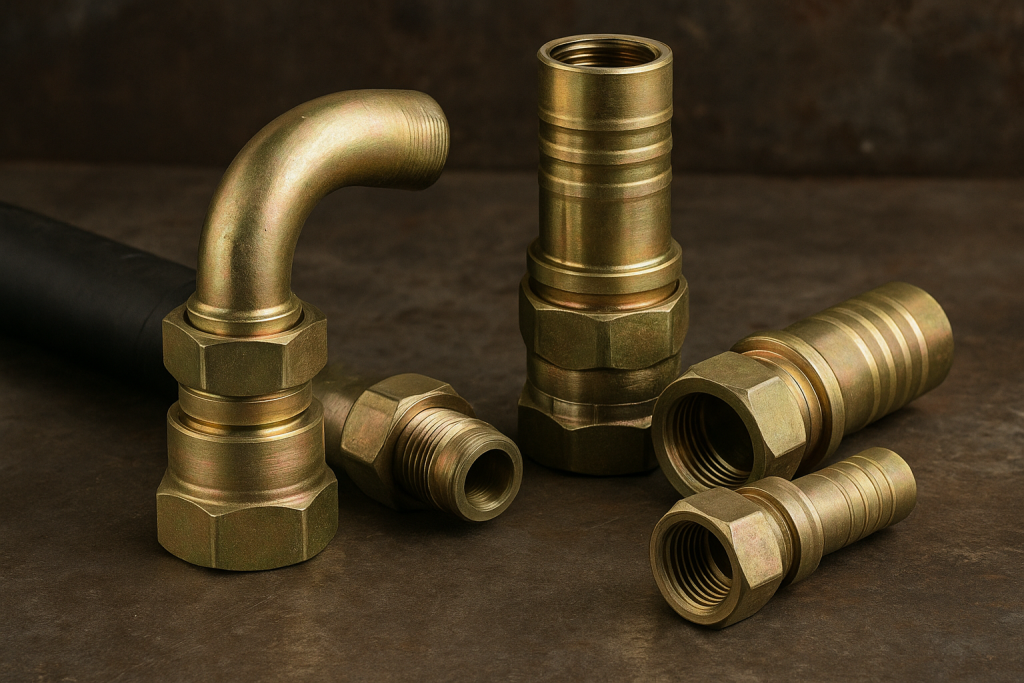Blog
Hydraulic Hose Fittings: Tips for Heavy Equipment Operators
April 24, 2025
Hydraulic Hose Fittings: Essential Tips for Heavy Equipment Operators
Get essential tips on selecting, maintaining, and handling hydraulic hose fittings for heavy equipment. Trust Broda Hose for expert solutions!
Hydraulic hose fittings are essential for maintaining the efficiency and safety of heavy equipment by ensuring a secure connection between hoses and machinery. These fittings enable the smooth flow of hydraulic fluid under high pressure, preventing leaks and system failures. Proper selection and maintenance help minimise downtime, extend equipment lifespan, and enhance overall performance.
Importance of Choosing the Right Hydraulic Hose Fittings
Choosing the right hydraulic hose fittings is crucial for heavy equipment performance, as improper fittings can cause leaks, pressure loss, and system failure. Operators should consider factors like material compatibility, pressure rating, and fitting type to ensure durability and efficiency. Selecting high-quality fittings that withstand pressure and temperature demands enhances system reliability, reduces maintenance costs, and improves workplace safety.
3 Signs of Wear and When to Replace Hydraulic Hose Fittings
Regular inspections of hydraulic hose fittings are necessary to prevent unexpected failures. The following are three common signs that indicate the need for replacement:
1. Visible Cracks and Leaks – Replace hydraulic hoses immediately if they have cracks or leaks, as they can weaken the system, reduce performance, and cause environmental hazards.
2. Corrosion and Rust – Moisture and harsh conditions cause fittings to corrode, weakening connections and increasing leak risks. Regular inspections and timely replacements are essential.
3. Loose or Damaged Threads – Worn or stripped threads weaken hydraulic fittings, causing pressure loss and inefficiencies. Replace damaged fittings promptly to maintain a secure connection.
Safety Best Practices for Handling Hydraulic Hose Fittings
Handling hydraulic hose fittings correctly is vital to maintaining equipment safety and operator protection. Implementing the following best practices can minimise risks associated with hydraulic systems:
• Use the Right Tools and Equipment – Operators should always use the appropriate tools when installing or removing hydraulic hoses. Wrenches and torque tools designed for hydraulic applications help ensure secure connections without over-tightening, which can damage the fittings.
• Follow Proper Installation Procedures – Improper installation can lead to premature fitting failure. Ensuring that fittings are clean, correctly aligned, and securely tightened according to manufacturer specifications can prevent leaks and system malfunctions.
• Wear Protective Gear – Hydraulic systems operate under high pressure, posing potential hazards such as fluid injection injuries and burns. Operators should wear protective gloves, safety goggles, and appropriate work attire to reduce the risk of accidents when handling hydraulic hose fittings.
For more insights on hydraulic safety, visit SafeWork NSW to learn about best practices for handling and maintaining hydraulic equipment safely.
Reliable Hydraulic Hose Solutions from Broda Hose
Maintaining high-quality hydraulic hose fittings is essential for the safe and efficient operation of heavy equipment. Choosing the right fittings, conducting regular inspections, and adhering to safety practices can help prevent costly repairs and ensure the longevity of hydraulic systems.
For superior hydraulic services and expert advice, Broda Hose offers a wide range of reliable solutions tailored to heavy-duty applications. Contact us for more information.
Optimized by: Netwizard SEO